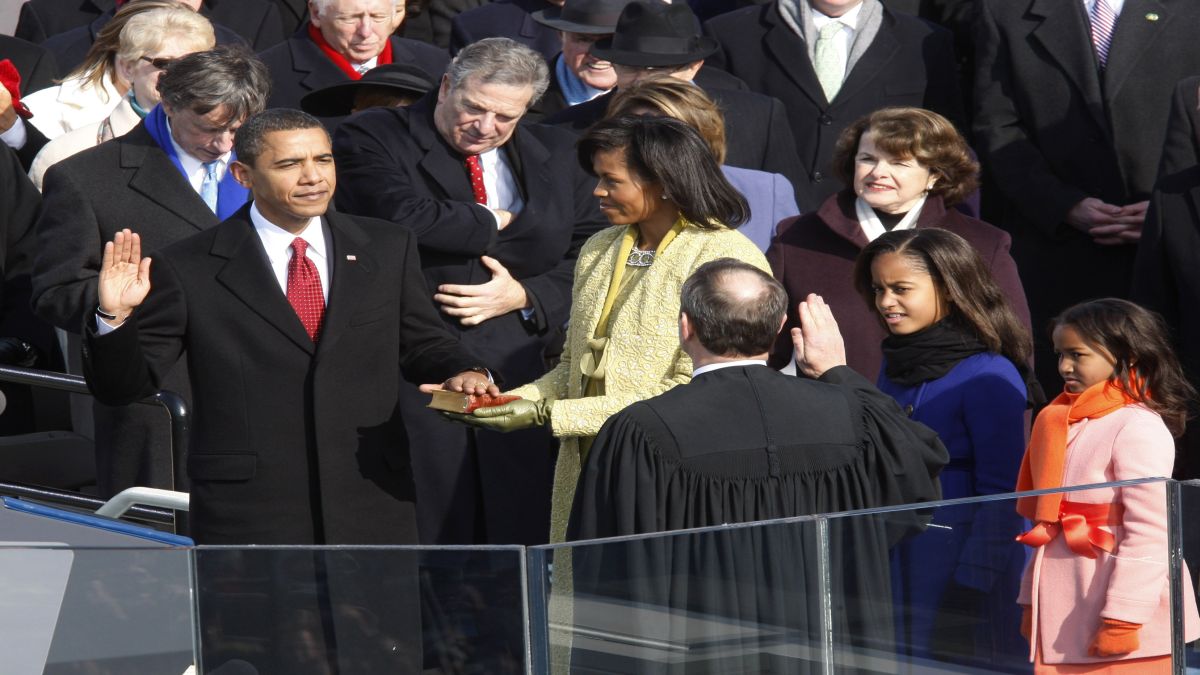In 2009, America made its history as the first Black person, Barack Obama, was sworn in as the 44th president of the country. In front of record-breaking crowds, the young senator became the commander-in-chief of the United States, taking oath on the Bible used by Abraham Lincoln. Here’s what else happened
“On this day, we gather because we have chosen hope over fear, unity of purpose over conflict and discord.”
With these words, Barack Hussein Obama was sworn in as the 44th president of the United States on January 20, 2009, making history as being the first African-American to win the election to the nation’s highest office the previous November.
As part of Firstpost Explainers’ History Today series, we take a look back at the historic swearing-in of Barack Obama as well as other big events, including the end to the Iran hostage crisis in 1981.
USA gets its first Black president-Barack Obama
On a cold, dreary day in Washington DC, rays of hope emerged on January 20 as Barack Obama was sworn in as the 44th US president. With this, he entered history books becoming the first African American to hold US’ highest office.
Obama’s swearing in on January 20, 2009 came after the junior US senator won a tight Democratic primary battle over Hillary Clinton before triumphing over Arizona Senator John McCain, the Republican candidate, in the general election.
Taking oath on the Bible used by President Abraham Lincoln at his first inauguration in 1861, Barack Obama delivered a message of hope and optimism that embodied his main message — ‘Yes We Can’.
Many praised Obama’s inaugural speech for being one of restraint and plain speaking. However, David E Sanger, correspondent for The New York Times, described the speech as the harshest rebuke of an outgoing president during an inaugural address since Franklin Roosevelt’s call for restoration of American values.
Impact Shorts
More ShortsCrowds of people thronged the National Mall, stretching from the Capitol Building to beyond the Washington Monument. According to an official estimate, some 1.8 million people witnessed Obama’s inauguration, surpassing the previous record of 1.2 million, set by the inaugural crowd of Lyndon B Johnson in 1965.
After the inauguration, Obama attended at least 10 official inaugural balls in the evening.
Iran hostage crisis comes to an end
January 20 is a day of significance to the US. Minutes after Ronald Reagan took the oath of office as US president in 1981, 52 American captives held at the US embassy in Tehran, were released, ending the 444-day Iran Hostage Crisis.
The drama all began in the aftermath of the Shah of Iran, Mohammad Reza Pahlavi’s ouster. Angered that the US government had allowed the ousted Shah of Iran to travel to New York City for medical treatment, on November 4, 1979, Iranian students seized the US embassy and detained more than 50 Americans, ranging from the Chargé d’Affaires to the most junior members of the staff, as hostages.
Ayatollah Khomeini, who took over as Iran’s political and religious leader, refused all appeals to release the hostages — even one made by the UN Security Council.
However, two weeks after the storming of the embassy, the Ayatollah began to release all non-US captives, and all female and minority Americans, citing these groups as among the people oppressed by the government of the United States. The remaining 52 captives remained at the mercy of the Ayatollah for the next 14 months.
According to reports, the hostages were moved around the compound constantly, handcuffed, beaten, tortured and forced to undergo mock executions at gunpoint.
President Jimmy Carter on April 25, 1980, ordered a military operation to rescue the hostages, known as Operation Eagle Claw. But the operation failed: eight US servicemen were dead and several others injured. The rescuers got nowhere near the embassy — the mission was aborted when three of the eight helicopters suffered various equipment failures.
In November 1980, Carter lost the presidential election to Republican Ronald Reagan. Soon after, with the assistance of Algerian intermediaries, successful negotiations began between the United States and Iran.
And negotiations bore fruit when on January 20, they were released to West Germany where former President Carter, acting as emissary, received them.
Britain’s King George V dies
Just before midnight on January 20, 1936, Britain’s King George V died at Sandringham, in Norfolk, England. Initially, the world was made to believe that the monarch had died entirely of natural causes. In fact, The Times reported the news with the headline ‘A Peaceful Ending at Midnight’ and a brief article detailing his final hours.
But evidence released 50 years later shows that the King’s death was not as peaceful as newspapers suggest.
Notes made by the King’s physician, Lord Dawson of Penn, disclose that as the king’s condition deteriorated throughout the day Dawson consulted Queen Mary and the King’s son, Edward, who instructed him not to prolong the King’s life unnecessarily. Taking this to heart, Dawson administered a lethal dose of morphine and cocaine and within 40 minutes, he was dead.
This Day, That Year
>> On January 20, 1841, the island of Hong Kong was ceded by China to Great Britain. It returned to Chinese control in July 1997.
>> American astronaut Buzz Aldrin was born in Montclair, New Jersey on January 20, 1930.
>> In 1961, on the same day, President John F Kennedy urged Americans, “ask not what your country can do for you – ask what you can do for your country.”
>> In 2020, the US recorded its first Covid-19 case in a man from Washington State.
)